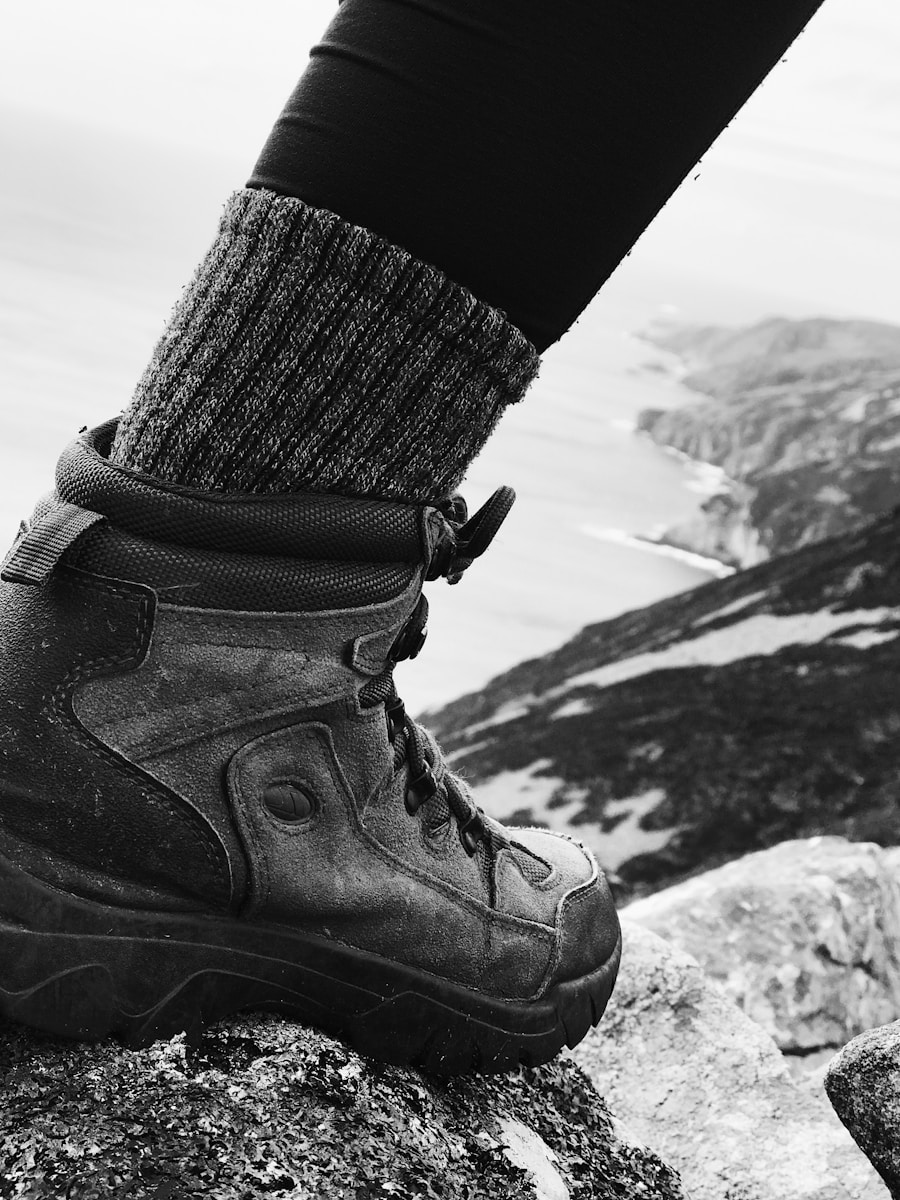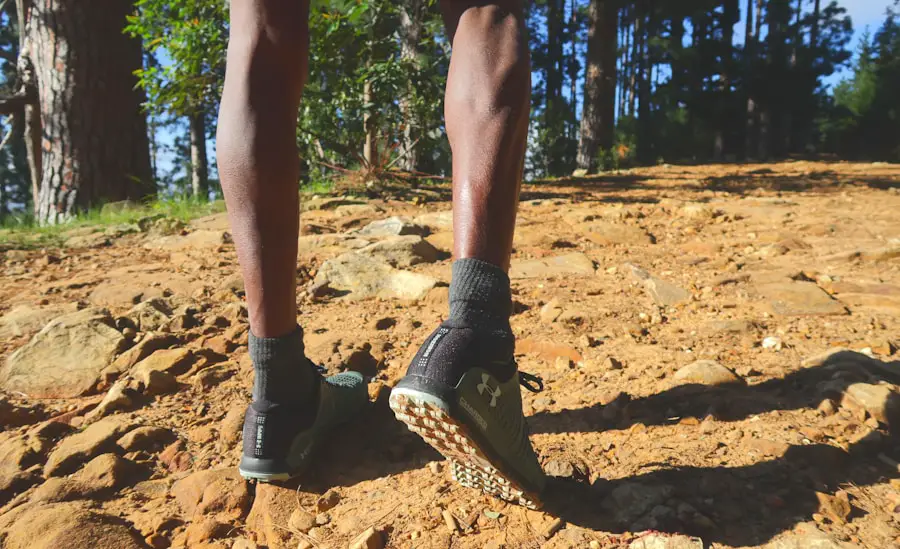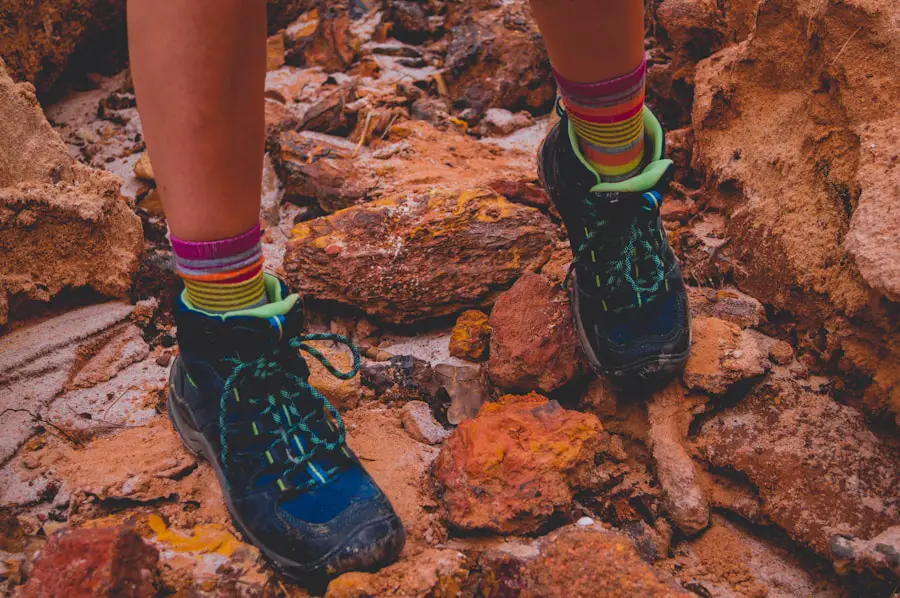Hiking is an activity that connects individuals with nature, offering both physical challenges and mental rejuvenation. As hikers traverse diverse terrains, the importance of appropriate gear cannot be overstated. Among the essential items in a hiker’s wardrobe, socks play a pivotal role in ensuring comfort and performance.
Wool socks, in particular, have gained popularity among outdoor enthusiasts for their unique properties that cater to the demands of hiking. Unlike synthetic alternatives, wool offers a combination of natural benefits that enhance the overall hiking experience. The use of wool in sock manufacturing dates back centuries, with its origins rooted in the need for warmth and comfort.
Today, advancements in textile technology have refined wool’s application, making it a preferred choice for modern hikers. The natural fibers of wool provide a range of advantages, from moisture management to temperature regulation, making them an ideal companion for both short day hikes and extended backpacking trips. As we delve deeper into the specific benefits of wool socks, it becomes clear why they are often regarded as a staple in outdoor gear.
Key Takeaways
- Wool socks provide superior comfort and cushioning for hiking due to their natural elasticity and softness
- They offer excellent moisture wicking and breathability, keeping feet dry and preventing blisters
- Wool socks provide insulation and temperature regulation, keeping feet warm in cold conditions and cool in hot conditions
- Wool socks are highly durable and long-lasting, making them a cost-effective choice for hikers
- They have natural odor resistance and are environmentally friendly, making them a sustainable choice for outdoor enthusiasts
Comfort and Cushioning
Cushioning and Impact Absorption
The natural crimp of wool fibers creates air pockets, providing cushioning that helps absorb impact during hikes. This is particularly beneficial when navigating rocky trails or uneven surfaces, as it reduces the strain on the feet and minimizes the risk of blisters.
Enhanced Comfort and Fit
The plush feel of wool against the skin enhances overall comfort, allowing hikers to focus on their surroundings rather than discomfort. Moreover, the fit of wool socks is often superior to that of synthetic options. Many brands design their wool socks with strategic padding in high-impact areas, ensuring that they conform to the shape of the foot.
Preventing Slippage and Foot Fatigue
This tailored fit not only enhances comfort but also helps prevent slippage within the boot, which can lead to chafing and blisters. The combination of cushioning and a snug fit makes wool socks an excellent choice for long hikes where foot fatigue can become a concern.
Moisture Wicking and Breathability

Wool is renowned for its moisture-wicking properties, which are essential for maintaining dry feet during hikes. Unlike cotton, which absorbs moisture and retains it against the skin, wool fibers can wick away sweat and moisture, drawing it to the outer surface where it can evaporate. This feature is particularly advantageous during strenuous activities when perspiration levels rise.
By keeping feet dry, wool socks help prevent the development of blisters and other foot ailments that can arise from prolonged moisture exposure. In addition to moisture management, wool socks are also highly breathable. The natural structure of wool fibers allows for air circulation, which helps regulate temperature within the sock.
This breathability is crucial during hikes that involve varying levels of exertion or changes in weather conditions. For instance, on a warm day, breathable wool socks can help keep feet cool by allowing heat to escape, while still providing insulation when temperatures drop. This adaptability makes wool socks suitable for a wide range of hiking environments.
Insulation and Temperature Regulation
| Insulation Material | R-Value | Temperature Regulation |
|---|---|---|
| Fiberglass | 2.2 – 2.7 per inch | Good |
| Spray Foam | 6.0 – 7.0 per inch | Excellent |
| Cellulose | 3.2 – 3.8 per inch | Good |
| Polyurethane Foam | 5.6 – 6.3 per inch | Excellent |
Wool’s ability to insulate is one of its most celebrated characteristics. The natural fibers trap air, creating a barrier that retains heat while still allowing moisture to escape. This insulation is particularly beneficial during colder hikes when maintaining warmth is essential for comfort and safety.
Wool socks can keep feet warm even in frigid conditions, making them an excellent choice for winter hiking or high-altitude treks where temperatures can plummet. Temperature regulation is another critical aspect of wool’s performance. Unlike synthetic materials that can become clammy when wet, wool continues to provide warmth even when damp.
This property is vital for hikers who may encounter rain or snow during their adventures. The ability to maintain warmth without compromising breathability ensures that hikers remain comfortable throughout their journey, regardless of changing weather conditions. This dual functionality makes wool socks a versatile option for year-round hiking.
Durability and Longevity
When investing in hiking gear, durability is a key consideration. Wool socks are known for their resilience and longevity compared to many synthetic alternatives. The natural fibers of wool are inherently strong and can withstand significant wear and tear without losing their shape or effectiveness.
High-quality wool socks are often reinforced in high-abrasion areas such as the heel and toe, further enhancing their durability. Additionally, wool has a natural elasticity that allows it to retain its shape over time. Unlike some synthetic materials that may stretch out or lose their cushioning properties after repeated use, wool socks maintain their fit and performance even after numerous washes.
This durability translates into cost-effectiveness for hikers who seek reliable gear that will last through many adventures. Investing in a good pair of wool socks means fewer replacements and more time spent enjoying the great outdoors.
Odor Resistance

One of the less discussed yet highly appreciated benefits of wool socks is their natural odor resistance. Wool fibers contain lanolin, a natural oil that helps repel bacteria and fungi responsible for unpleasant odors. This characteristic is particularly advantageous during long hikes or multi-day backpacking trips when changing socks may not be feasible.
Hikers can enjoy extended wear without the worry of their feet developing an offensive smell. The odor-resistant properties of wool also contribute to overall foot health. By minimizing bacterial growth, wool socks help reduce the risk of infections and other foot-related issues that can arise from prolonged moisture and warmth.
This aspect is especially important for those who spend extended periods on their feet or engage in strenuous activities where hygiene may be compromised. The ability to stay fresh and comfortable throughout a hike enhances the overall experience and encourages hikers to push their limits.
Environmentally Friendly
In an era where sustainability is increasingly important, choosing environmentally friendly gear has become a priority for many outdoor enthusiasts. Wool is a renewable resource, as sheep produce new fleece annually, making it a sustainable choice compared to synthetic materials derived from petroleum-based products. Additionally, wool is biodegradable, meaning it will break down naturally over time without contributing to landfill waste.
Many manufacturers are also adopting ethical practices in sourcing their wool, ensuring that sheep are treated humanely and raised in sustainable environments. By opting for wool socks from reputable brands that prioritize ethical sourcing, hikers can feel good about their purchase while supporting environmentally responsible practices within the textile industry. This commitment to sustainability aligns with the values of many outdoor enthusiasts who seek to protect the natural landscapes they love to explore.
The Benefits of Choosing Wool Socks for Hiking
The myriad benefits of wool socks make them an indispensable part of any hiker’s gear collection. From unparalleled comfort and cushioning to moisture-wicking capabilities and temperature regulation, these natural fibers offer a performance level that synthetic materials often struggle to match. Their durability ensures that they withstand the rigors of outdoor adventures while providing long-lasting value.
Moreover, the odor resistance inherent in wool contributes to overall foot health during extended hikes, allowing hikers to focus on their journey rather than discomfort or hygiene concerns. As sustainability becomes increasingly important in consumer choices, wool stands out as an environmentally friendly option that supports ethical practices within the industry. In summary, choosing wool socks for hiking not only enhances comfort and performance but also aligns with a commitment to sustainability and responsible consumerism.
Whether embarking on a short day hike or an extended backpacking expedition, investing in high-quality wool socks can significantly elevate the hiking experience, making every step more enjoyable and every adventure more memorable.
When planning a hiking trip, it’s important to consider the right gear to keep you comfortable and safe on the trails. One essential item to pack is a pair of wool socks, as they provide warmth, moisture-wicking properties, and cushioning for your feet. According to a recent article on TakeTravelInfo, wool socks are particularly beneficial for hiking in colder temperatures or wet conditions, as they can help regulate your body temperature and prevent blisters. So before you head out on your next outdoor adventure, be sure to invest in a quality pair of wool socks to keep your feet happy and healthy.
FAQs
What are the benefits of wearing wool socks for hiking?
Wool socks are moisture-wicking, meaning they can keep your feet dry and comfortable during long hikes. They also provide insulation, keeping your feet warm in cold weather and cool in hot weather. Additionally, wool socks are naturally odor-resistant and can help prevent blisters.
Are wool socks durable for hiking?
Yes, wool socks are known for their durability and can withstand the rigors of hiking. They are resistant to wear and tear, making them a reliable choice for outdoor activities.
Do wool socks provide cushioning for hiking?
Wool socks offer natural cushioning and can provide extra comfort and support for your feet during hikes. This can help reduce fatigue and prevent foot pain during long treks.
Are wool socks suitable for all seasons?
Wool socks are versatile and can be worn in all seasons. They provide insulation in cold weather and are breathable enough to keep your feet comfortable in warmer temperatures. This makes them a great choice for year-round hiking.
How do wool socks compare to other materials for hiking?
Wool socks outperform many other materials for hiking due to their moisture-wicking properties, insulation, durability, and natural cushioning. They are a popular choice among hikers for their overall performance and comfort.
